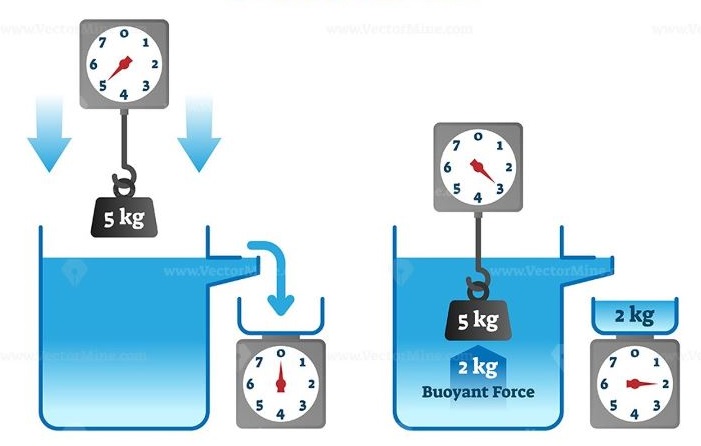Archimedes Principle, a cornerstone in the realm of physics and fluid mechanics, stands as a testament to the brilliance of the ancient Greek mathematician and inventor, Archimedes of Syracuse. In this comprehensive exploration,
we delve into the origins, principles, and practical applications of this fundamental concept, which continues to shape our understanding of buoyancy and displacement.

Archimedes principle of Syracuse:-
Archimedes, born around 287 BCE in Syracuse, Sicily, was a polymath whose contributions extended across mathematics, engineering, and physics. Among his many groundbreaking discoveries, Archimedes’ Principle emerged as a beacon in understanding the behavior of fluids, particularly in the context of buoyancy.
The Principle Unveiled
Archimedes Principle revolves around the concept of buoyancy, asserting that an object submerged in a fluid experiences an upward force equal to the weight of the displaced fluid. This buoyant force opposes the force of gravity acting on the object, resulting in the apparent loss of weight when immersed in a fluid.
The famous anecdote involving Archimedes and his Eureka moment tells of his realization while in a bath – the water displaced by his body provided the key to understanding buoyancy. This revelation led to the formulation of Archimedes’ Principle, a principle still fundamental in the study of fluid mechanics.
The Mathematics Behind Buoyancy: Archimedes Principle in Action
Mathematically, Archimedes’ Principle is expressed as follows: the buoyant force (Fb) acting on an object submerged in a fluid is equal to the weight of the fluid displaced by the object.
For More information visit web :-https://xeidea.com/
And news website:- https://lokprasang.com/

